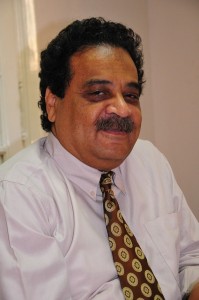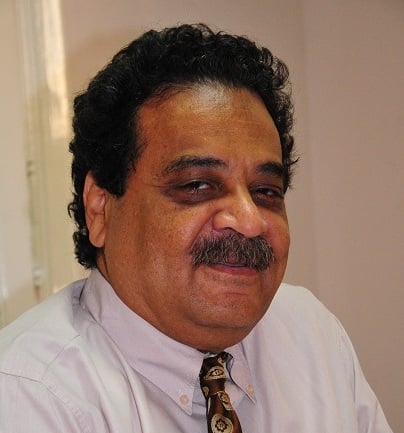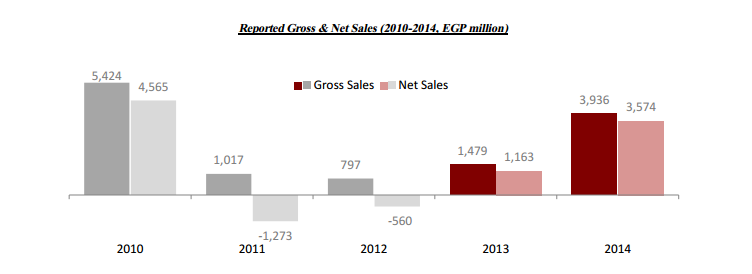
Within the “1952” – or “army” – family, power is transferred from president to president when the regime arrives at a crisis. For this reason, a new president must confront the causes that led to the crisis without sacrificing the constants of the regime. In other words, the new president must be seen to redraw political and economic lines, while simultaneously maintaining the regime’s constants, so that it appears to political and social forces which do not belong to the ruling class that new constants have been formed.
In general, when the new president, just by virtue of the fact that he is new, takes power, there is an immediate air of optimism. What is also striking is that, at the beginning of his rule, the president becomes more open to political and social forces for two reasons: on the one hand, he is searching for a way out of the crisis that the former regime experienced, and on the other hand he is also searching for something to crystallise his popularity and strengthen his role and position.
In order to succeed in handling the reins, the new president may allow for the overthrow of the ruling junta or group, and this process is closely related to the process of altering some tendencies, as it also relates to the president’s ability to build a new junta.
Sometimes the president makes significant and potentially dangerous changes which are necessary for the interest of the ruling class and its strategic choices. This is what happened in Sadat’s case, who bore the burden of making significant changes to economic and political trends in the interest of the ruling class at the time, most notably the launch of Infitah policies and the visit to Jerusalem. Perhaps Sadat is similar to McCarthy in this way, who the American ruling class charged with severing the bonds of the Soviet-American alliance during the Cold War. The American ruling class viewed what McCarthy did as necessary and urgent and all evidence and logic affirmed that he did not act on his own accord.
On the other hand, at other times, the president’s role is not as much to alter tendencies as it is to give the impression that a change has taken place, and that this change is within the limits of what is possible. He also seeks to give the appearance that what remains unchanged is not his responsibility, as it was inherited from his predecessor.
This softens the situation, as the new president is understood not to be directly responsible for what persists from his predecessor’s rule. This is what happened in Mubarak’s case, where many of his supporters felt as though he was not responsible for peace with Israel nor the Infitah, and that Mubarak, to these supporters, was forced to continue along the same path imposed on him by Sadat. He did so reluctantly in their eyes, in the best possible way that would inflict the least possible damage.
The severity of necessary changes that must be taken by the president on the one hand and the extent to which the popularity of the junta that he inherited from his predecessor on the other are what determine the method through which the president will deal with this junta. As a result, it was not a coincidence that Sadat toppled Nasser’s junta through attempting to appear obedient and portray himself as one of their own. In reality, he was preparing to pounce, which he did during the 15 May coup, and Mubarak later deposed Sadat’s junta leisurely through containment tactics and partial changes rather than a full-on clash.
Now, what about Sisi? How does he work to crystallise his presence and take hold of the reins?
Sisi came directly from the army to the presidential palace and within the army itself he only enjoyed membership in the Supreme Council of the Armed Forces for a few years. In 2010 he took command of military intelligence and before that was the leader of the northern military region after leading the mechanised infantry division. Al-Sisi, compared to the presidents that preceded him, did not have a significant opportunity to develop political and administrative abilities inside or outside the army.
On the other hand, as opposed to the previous presidents during the first days of their power, Al-Sisi did not work to increase his popularity among the people, because, unlike them, he already achieved the height of popularity after leading the army against the Muslim Brotherhood. This is a reason why he is not making efforts to communicate with political parties and entities.
Also, contrary to his predecessors, Al-Sisi was not obliged to solve the issues that led to the fall of the previous regimes . Does this mean that Al-Sisi is not trying to make some changes to the tendencies of Mubarak’s regime?
There are other strains within the ruling class which dislike the 1952 family inheritance system for other reasons that pertain to corruption, administrative sluggishness, a deterioration of government performance, economic policy – forming a long list of reasons that means, from their perspective, that reforms must be enacted.
Popular momentum came to an unprecedented peak during the second week of February 2011 with demands triggering concern across the ruling class, including those who desired reform. This pushed them all to unite around the idea of Mubarak’s ouster and an inheritance scenario. The leadership of this ruling class and its figures began calling for an end to the revolution phase and instead requesting that the work begin. In this way we can say that Al-Sisi arrived to power after the Mubarak regime crisis was solved, a crisis that ended simply by toppling his regime.
The pressing questions now are: Will Mubarak’s ouster and an elimination of the Muslim Brotherhood threat prove sufficient for Al-Sisi? Will he preserve Mubarak’s junta, or get rid of them, and how? What is this junta’s capacity to remain?
Farid Zahran is a publisher and writer. He is the co-founder of the Egyptian Social Democratic Party




